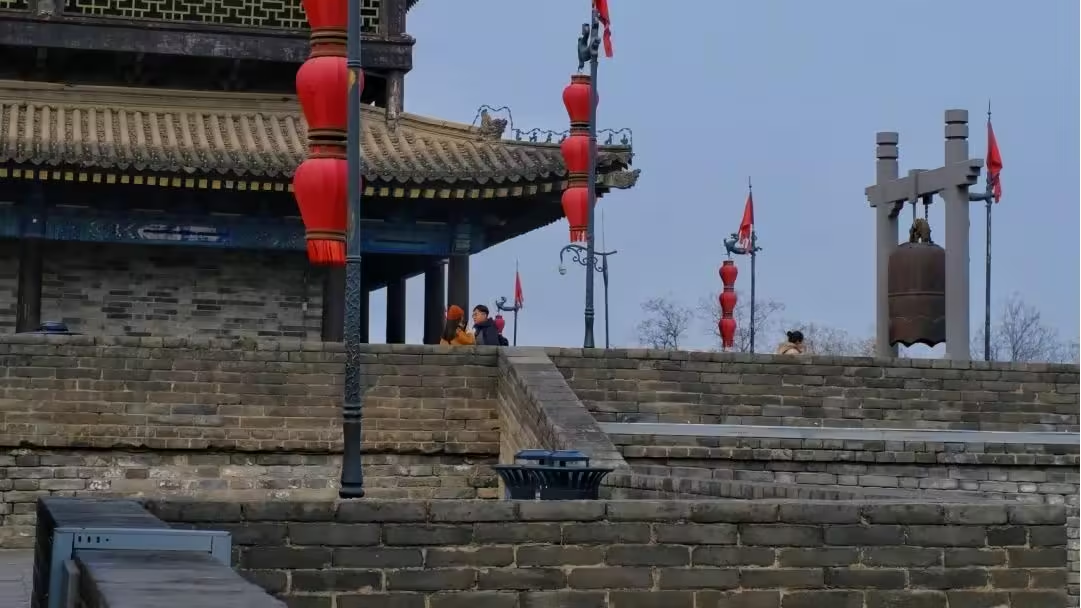Xi’an City Wall, one of China’s most iconic ancient fortifications, offers visitors a unique opportunity to explore its grandeur on foot. Stretching over 13 kilometers, this massive structure encircles the ancient city and features multiple gates that allow easy access to different parts of the wall. Whether you’re seeking historical insight or panoramic city views, walking the Xi’an City Wall provides an immersive experience. In this guide, we’ll explore some of the best walking routes, highlight key gates, and offer suggestions for combining your wall exploration with visits to nearby attractions.
Overview of Xi’an City Wall Gates
Currently, there are eight gates open to visitors for accessing the City Wall: East Gate (Changle Gate, 长乐门), South Gate (Yongning Gate, 永宁门), West Gate (Anding Gate, 安定门), North Gate (Anyuan Gate, 安远门), Wenchang Gate (文昌门), Hanguang Gate (含光门), Shangde Gate (尚德门), and Zhongshan Gate (中山门) (Located near Yongxingfang)
Recommended Walking Routes
1. South Gate (Yongning Gate) to East Gate (Changle Gate) via Wenchang Gate and Zhongshan Gate
- Route Description: Start at the South Gate (Yongning Gate) and walk eastward along the City Wall. Along the way, you will pass through the Wenchang Gate, Jianguo Gate, and finally reach the East Gate (Changle Gate) before continuing to Zhongshan Gate.
- Why This Route? This is the most classic walking route along the Xi’an City Wall. The South Gate (Yongning Gate) is the most well-preserved of the four main gates, showcasing intact structures like its gatehouse, arrow tower, barbican, and city gate. This route takes about 40 minutes and leads you to Zhongshan Gate, which is conveniently located near Yongxingfang, a popular food street where you can indulge in local snacks. Alternatively, you can reverse the route, starting at Zhongshan Gate after visiting Yongxingfang, and finish at Yongning Gate.
2. East Gate (Changle Gate) to South Gate (Yongning Gate) via Wenchang Gate
- Route Description: Start at the East Gate (Changle Gate) and walk westward along the City Wall. Along the way, you will pass Jianguo Gate, Wenchang Gate, and end at the South Gate (Yongning Gate).
- Why This Route? In Chinese culture, the east has long been regarded as an important direction. The term “zuo dong” (being the host) refers to seating guests in the east, and historical figures such as princes were often referred to as living in the “Eastern Palace.” This route is slightly easier than others and provides a more relaxed walking experience. After descending the City Wall at Yongning Gate, you can visit Xi’an’s SKP mall to experience modern luxury, or explore local parks like Liuyuan and Songyuan, which offer a serene atmosphere.
Additional Walking Routes
South Gate (Yongning Gate) to West Gate (Anding Gate)
Head westward from the South Gate (Yongning Gate), passing through Hanguang Gate until you reach the southwest corner of the City Wall. This semi-circular corner is a key remnant of the Tang Dynasty imperial city wall, offering spectacular views. From here, you can continue northward and either exit at the West Gate (Anding Gate) or visit Guangren Temple, located near the southwest corner.
South Gate (Yongning Gate) to Jianguo Gate
Walk eastward from Yongning Gate and descend at Jianguo Gate. This area is home to the Jianguo Cultural and Creative Street, where you’ll find a lively atmosphere filled with cafes, food shops, bakeries, bars, and small boutique stores.
East Gate (Changle Gate) to South Gate (Yongning Gate) (Reverse)
Start at Changle Gate and head south to Yongning Gate. This route takes you past Xi’an’s SKP mall or Chang’an International, providing a perfect blend of ancient and modern experiences. After your walk, you can relax at Liuyuan or Songyuan.
East Gate (Changle Gate) to North Gate (Anyuan Gate)
From Changle Gate, head north along the City Wall until you reach the northeast corner, where you can exit at Anyuan Gate (North Gate). This route allows you to experience the historical feel of Xi’an’s City Wall while hearing the distant hum of trains from the tracks below—a special feature for locals who live in the shadow of the wall.

